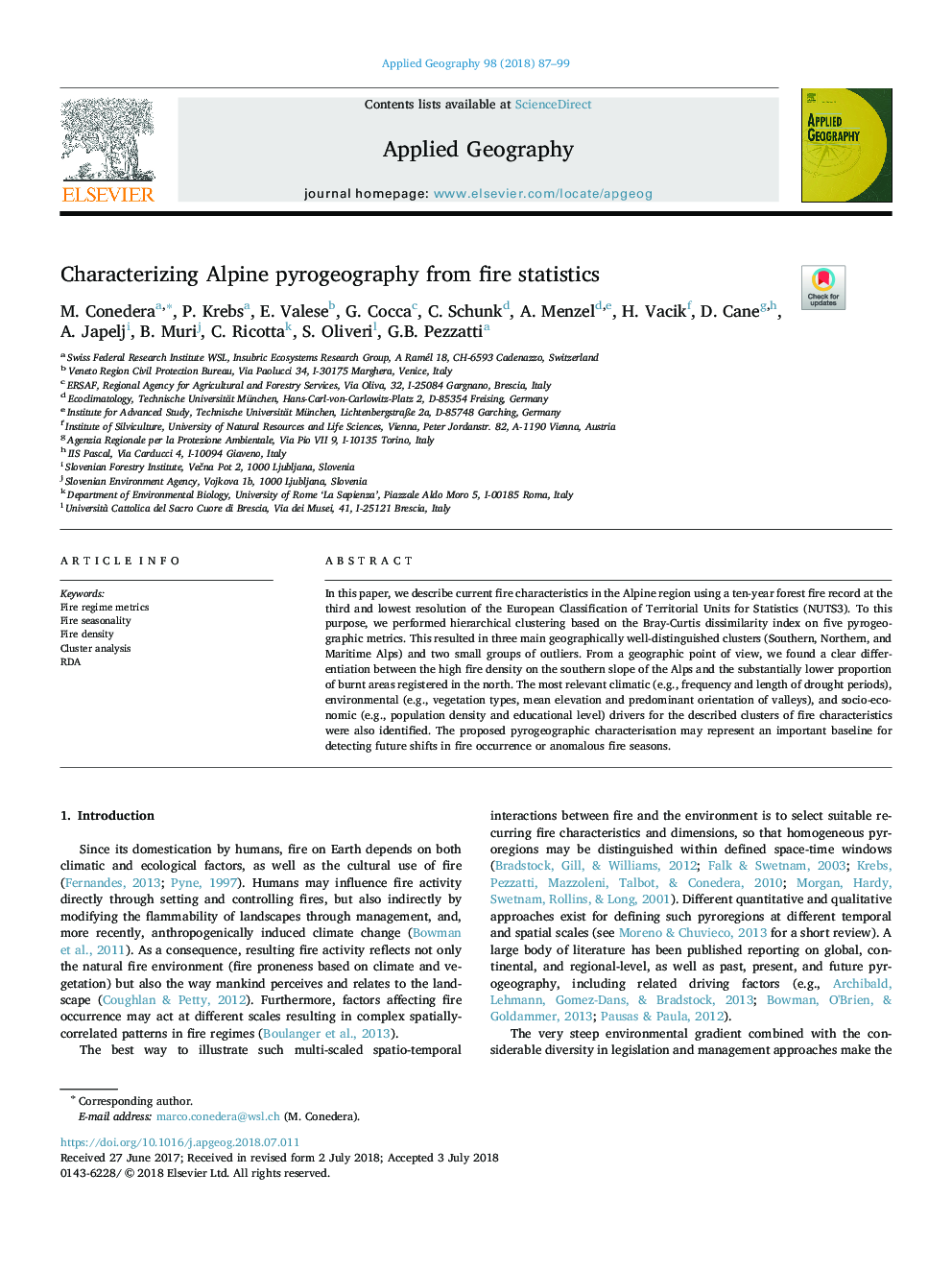| Article ID | Journal | Published Year | Pages | File Type |
|---|---|---|---|---|
| 6538207 | Applied Geography | 2018 | 13 Pages |
Abstract
In this paper, we describe current fire characteristics in the Alpine region using a ten-year forest fire record at the third and lowest resolution of the European Classification of Territorial Units for Statistics (NUTS3). To this purpose, we performed hierarchical clustering based on the Bray-Curtis dissimilarity index on five pyrogeographic metrics. This resulted in three main geographically well-distinguished clusters (Southern, Northern, and Maritime Alps) and two small groups of outliers. From a geographic point of view, we found a clear differentiation between the high fire density on the southern slope of the Alps and the substantially lower proportion of burnt areas registered in the north. The most relevant climatic (e.g., frequency and length of drought periods), environmental (e.g., vegetation types, mean elevation and predominant orientation of valleys), and socio-economic (e.g., population density and educational level) drivers for the described clusters of fire characteristics were also identified. The proposed pyrogeographic characterisation may represent an important baseline for detecting future shifts in fire occurrence or anomalous fire seasons.
Keywords
Related Topics
Life Sciences
Agricultural and Biological Sciences
Forestry
Authors
M. Conedera, P. Krebs, E. Valese, G. Cocca, C. Schunk, A. Menzel, H. Vacik, D. Cane, A. Japelj, B. Muri, C. Ricotta, S. Oliveri, G.B. Pezzatti,
